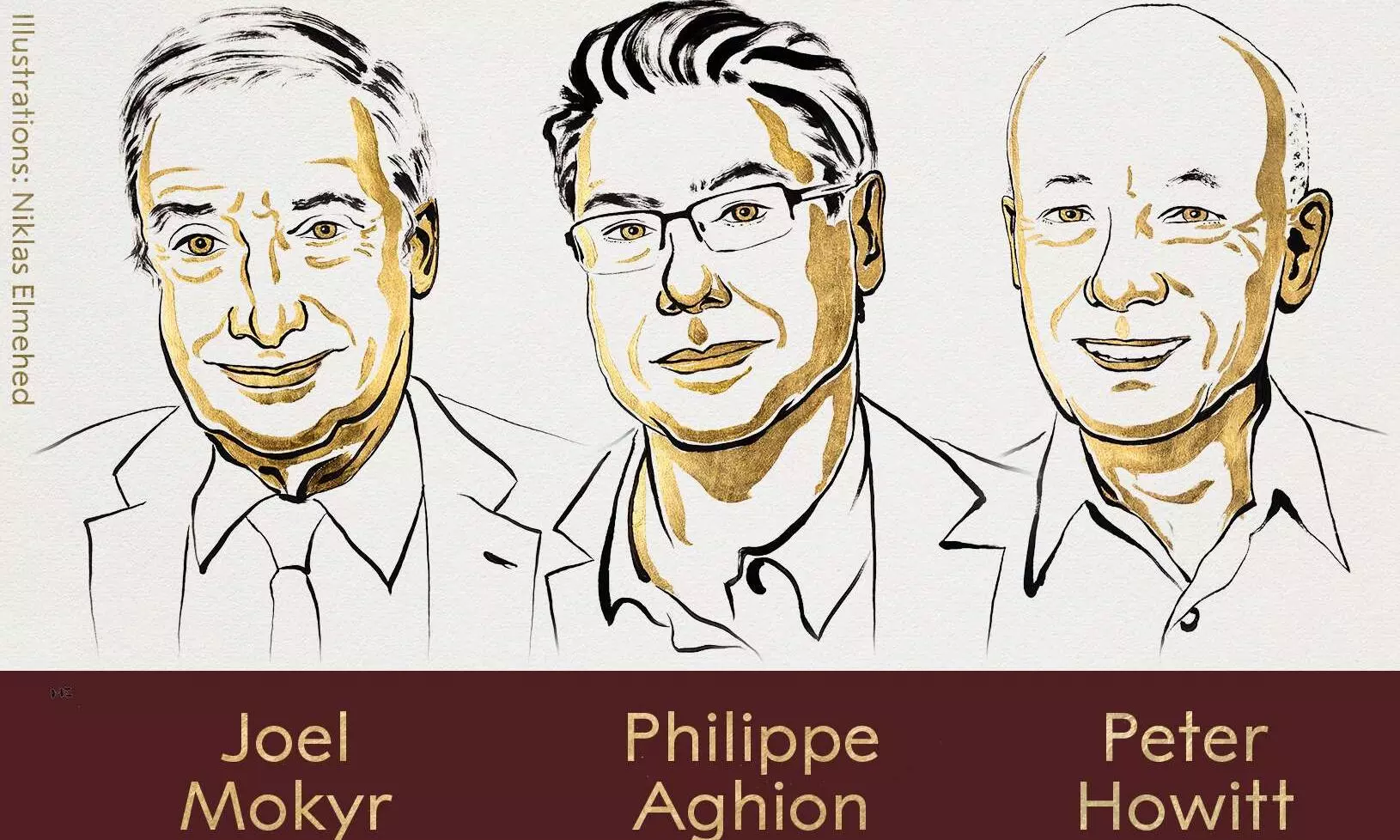
How innovation fuels growth: The 2025 Economics Nobel explained
The 2025 Nobel Prize in Economics honours scholars who showed how innovation and technology drive sustained global growth and long-term prosperity

The 2025 Nobel Prize in Economic Sciences was awarded to Joel Mokyr, Philippe Aghion, and Peter Howitt for explaining how technological progress and innovation fuel long-term prosperity. Their groundbreaking research answers a fundamental question in economics: Why did the world move from centuries of stagnation to an era of continuous growth?
For most of human history, economic output rose only in short bursts before plateauing. But beginning with the Industrial Revolution, nations experienced sustained, compounding growth. The laureates’ work reveals that innovation, supported by scientific reasoning and open societies, creates a self-perpetuating cycle of progress that improves global living standards.
Also Read: 2025 Nobel in Economics goes to Mokyr, Aghion, Howitt for innovation-driven growth
Joel Mokyr: How ideas spark enduring prosperity
Economic historian Joel Mokyr explored the cultural and intellectual shifts that allowed the Industrial Revolution to take off. He found that sustained growth required not just invention but scientific understanding of why technologies worked. Before this period, discoveries were often isolated and unrepeatable; knowledge lacked the theoretical depth needed for continuous improvement.
Mokyr’s key insights include:
Knowledge accumulation: Societies must build upon prior discoveries through scientific method, not just imitation.
Openness to change: Economic growth thrives where ideas circulate freely and outdated systems give way to experimentation.
Culture of curiosity: Progress depends on societies that reward questioning, testing, and risk-taking.
His research links intellectual freedom with economic vitality — showing that innovation flourishes where knowledge and culture align to support progress.
Also Read: Maria Corina Machado wins 2025 Nobel Peace Prize, Trump's hopes dashed
Aghion and Howitt: The dynamics of creative destruction
In 1992, Philippe Aghion and Peter Howitt introduced the influential theory of creative destruction — the process by which new innovations replace old technologies. They formalized it into a mathematical model demonstrating that economic growth is inherently disruptive but ultimately beneficial.
Their theory describes how:
New firms and ideas challenge incumbents, boosting productivity and efficiency.
Competition ensures that innovation continues, preventing monopolies from halting progress.
Policy balance is crucial — governments must encourage innovation while cushioning displaced sectors.
Creative destruction, though sometimes painful, is the lifeblood of capitalism. Without it, economies risk stagnation as dominant players resist change to protect their interests.
Also Read: Hungarian writer Laszlo Krasznahorkai wins Nobel Literature 2025
Lessons for today’s innovation-driven world
The laureates’ insights are deeply relevant in the age of artificial intelligence, biotechnology, and green technology. Their work reminds policymakers and businesses that innovation must be continuously nurtured, not feared.
To sustain growth in the 21st century, nations must:
Invest in education and R&D to fuel discovery.
Maintain open markets that reward competition and creativity.
Build adaptive institutions capable of managing transitions without stifling innovation.
Protect intellectual freedom to ensure a steady flow of new ideas.
Also Read: Nobel Prize in Chemistry 2025 goes to Kitagawa, Robson, Yaghi
The Human dimension of growth
As Committee Chair John Hassler observed, “Economic growth cannot be taken for granted. We must uphold the mechanisms that underlie creative destruction so that we do not fall back into stagnation.”
The message is clear: sustained prosperity requires societies that embrace renewal. By understanding and managing the forces of innovation, humanity can continue to drive progress, lift living standards, and create resilient economies for generations to come.

